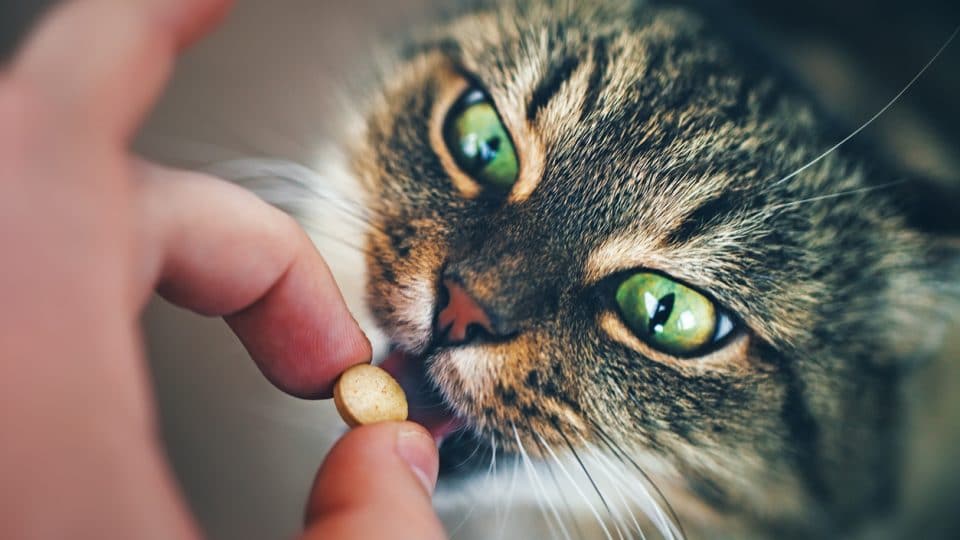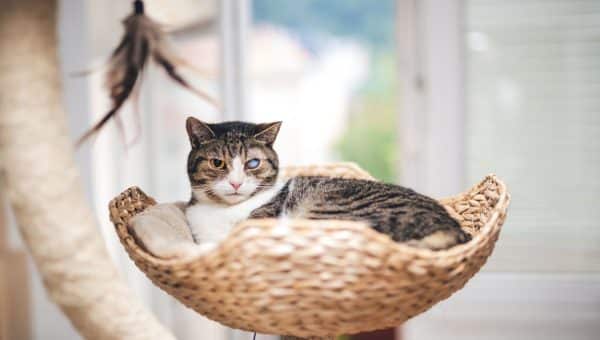- Not a substitute for professional veterinary help.
When your cat is sick, the last thing you want to do is prepare for battle with your beloved pet. It’s not unheard of to have an uncooperative cat that is victorious in pill-spitting, hiding under the couch, and eating everything in their bowl but the pill. But a catfight doesn’t need to be the end-all-be-all when it comes to giving your cat a pill.
The best way to give a cat a pill is to have everything you need laying out and ready before approaching your cat, says Dr. Jessica Taylor, DVM, Vice President of Veterinary Medicine at Petfolk. She adds that it can help to administer a pill just before mealtime when your cat is hungry, depending on the dosing instructions.
For more tips and tricks for giving cats pills, read on for insight direct from feline veterinary pros.
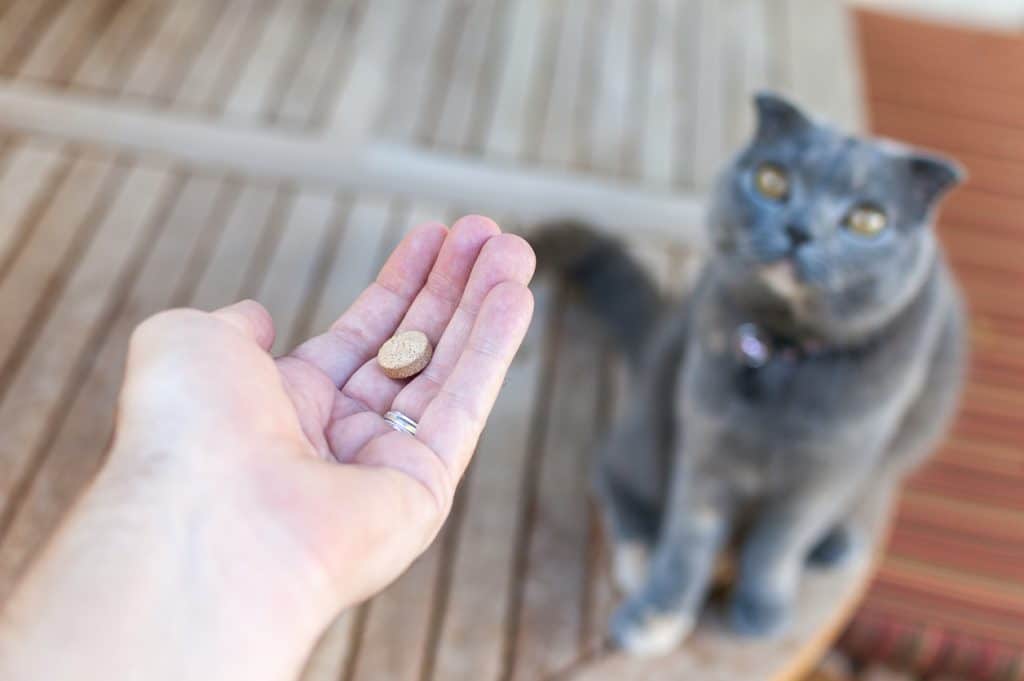
iStock/bradleyhebdon
Familiarize Yourself With the Medication & How to Administer It
Before crushing, splitting, or dissolving your cat’s pills in food or liquid, talk to your veterinarian. “Some medications have a protective coating on the exterior so they can be absorbed in a certain part of the gastrointestinal tract,” explains Dr. Carling Matejka, DVM, spokesperson for Solid Gold. While crushing and hiding a pill in food can help mask its bitter taste, breaking the outer layer could render the medication ineffective.
Other medications are available in chewable forms that can be crushed. Some pills must be taken with food and water. Regardless of form, it’s essential your pet takes their prescribed dosage on time and finishes it.
Safety Tips For Giving A Cat Pills
Don’t try to administer medication to your pet when you’re feeling unsure or without the proper preparation. “Cats can sense our stress,” Matejka says. To protect yourself and your cat, stay calm and be patient. “If you need help, don’t hesitate to ask your veterinarian or veterinary nurse to show you how,” she adds.
Tips to keep pet parents safe
Be sure your cat is up to date on all their vaccines, especially their rabies vaccine. “If you get injured and seek care, animal bites are reportable, and an unvaccinated pet may have to be quarantined,” Taylor explains. “Even indoor cats need to be vaccinated against rabies, as it continues to be a serious public health concern and is deadly if contracted.”
Tips to keep pet parents and cats safe
Matejka and Taylor agree: wrapping your cat in a towel or blanket can be a useful method for keeping you and your cat safe. “Towel wraps help make cats feel comfortable and safe without making them feel confined and scared,” Matejka shares. Plus, a towel or blanket can protect you from defensive scratches and bites.
To safely wrap your cat:
- Place the towel or blanket on a flat surface.
- Gently place your cat in the center in a natural crouching position with their paws underneath them.
- Fold over each side of the blanket or towel and tuck it under your cat. Leave their head exposed and the towel snug but not too tight around the neck. “Kind of like swaddling a baby,” Taylor says.
- Once snug, slide your wrapped kitty close to you, their rear end against your torso or legs.
The towel method isn’t for every cat, Matejka adds. If your cat is struggling excessively, skip the towel wrap and hold them firmly but gently on your lap instead. You may want to leave the towel on top of your lap.
What Are The Tools To Give Cats Pills?
Sometimes, pet parents need a little help giving cats pills. Here are the best tools that can help make the experience better for you and your cat.
High-value treats
Used to hide crushed pills or as a reward for a job well done, high-value treats during or after taking their medication are what your kitty deserves. “Churus are great. They’re highly-flavored tubes of cat treats that can mask many pills,” Taylor says. If your cat can’t have treats or isn’t food motivated, praise, playtime, and pets are also great ways to reward your cat.
“I make a little ball of food with Solid Gold’s Flavorful Feast™ Pate and stick the pill in the very center,” Matejka shares. “If your cat doesn’t have allergies or sensitivities, a small piece of meat also works.”
Pill pockets
Conveniently made with a hollowed-out interior, pill pockets hold and hide pills from your pet. They smell and taste like a treat, tricking some food-motivated felines into taking their medicine without an issue. Give your cat a small taste of the pill pocket before giving them one with the pill, Taylor suggests.
Pill maskers
Pill maskers are similar to pill pockets. Unlike pill pockets, pill maskers are not pre-formed. They come in a moldable paste that can be shaped around pills of any shape or size. TOMLYN makes a bacon-flavored pill masker that cats gobble up along with their pills.
Pill crushers and cutters
Read the medication’s label carefully before crushing or cutting your pet’s pills. If it is safe, pill cutters and crushers can make the job easier while ensuring your cat is getting their correct dosage. Tools like pill crushers and cutters ensure the pill is being cut as evenly or as small as possible, Matejka explains.
Pill popper
If putting your fingers between your cat’s sharp teeth sounds a bit too risky, there is a tool for that! A pill popper or pill gun is a long plunger that can help place a pill safely into a cat’s mouth. Matejka says the devices are safe to use, but when done improperly or when inserted too far into the mouth, they could cause pain or damage. So, ask your vet for a demonstration before trying a pill gun at home.
“Look for a plastic one with a rounded or soft tip,” Taylor adds. “I prefer the Bullseye Pill Gun Applicator because it tends to hold on to the pill better and has a thicker barrel to grasp.”
Prepare Your Cat to Take the Pill
If your cat is food motivated or their medication can be crushed and put into food, giving your cat a pill could be a breeze. When a pill can’t be crushed, you’ll need to prepare to orally administer the pill. “Whether using a pill gun or your hands, be sure to have everything laid out and ready before getting your cat,” Taylor says. “You often only get one chance.”
Giving a Pill by Food
Hide the pill in a portion of wet food, in a pill pocket, or pill masker. “I like to hide pills in a wet food ‘meatball’,” Matejka says. Because cats can’t taste sweets, vanilla or cherry flavors can be added to compounded pills to mask the bitter taste.
Other foods such as whipped cream, yogurt, baby food, squeeze cheese, melted vanilla ice cream, tuna juice, cream cheese, or low-sodium chicken broth are okay in small amounts to mask pills. Just be aware of food allergies specific to your pet before giving any food or treats.
Four Ways to Give a Pill to a Cat Who Loves to Eat
- Mix the pill into a serving of canned food and watch your cat gobble it up.
- Hide the pill in a Pill Pocket or other soft treat. “Give a couple of bites without the pill first, then give them the one with the pill,” Taylor recommends. Your cat may be so busy enjoying the treats, they won’t notice when they’re given the pill-containing one.
- Create a “maze” on a plate using whipped cream or squeeze cheese. Draw lines and dots across the surface and hide the pill within the design. Your cat may be so intrigued by following the lines that they consume the pill without realizing it.
- If you can safely dissolve the pill in liquid: Mix the crushed pill with a small amount of tuna juice or low-sodium chicken broth for your cat to lap up.
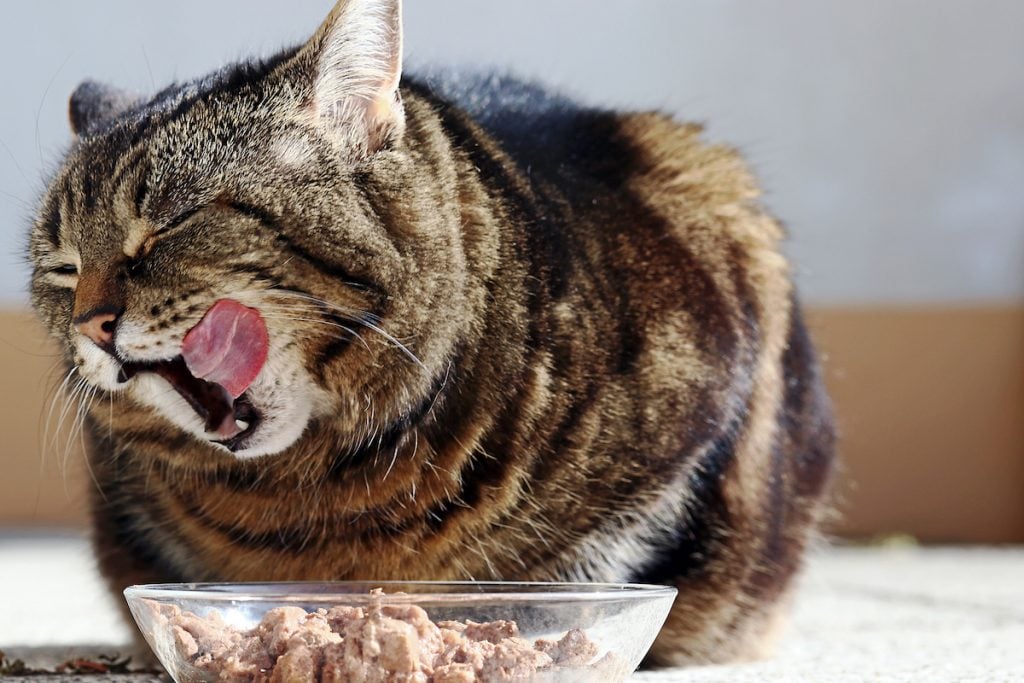
iStock/Astrid860
Giving a Pill by Mouth
Is your cat too clever to be fooled by hiding their pill in food? You’ll need to give them their pill orally. The pill-giving process can feel strange for your cat. However, your calm attitude and gentle handling will help reassure your cat. Swaddling your cat in a towel or blanket can help, too.
Five Steps to Give a Pill to a Cat Manually
- Position your cat in a towel wrap or on your lap, facing away from you.
- To open a cat’s mouth and administer a pill, approach from above. “There are bony prominences under each eye called the zygomatic arch. These are good landmarks to place your thumb and pointer finger, with the “C” part of your hand going over the head in front of the ears,” Taylor explains. “Gently tilt your cat’s head back, pointing their nose toward the ceiling. This usually causes the mouth to open slightly.”
- Using your other hand or with help from a friend, do one of the following: Use your fingers to place the pill on the back of their tongue; Place the pill into a pill popper. Insert it gently into the back of your cat’s mouth and push the plunger to release the pill. Insert a syringe containing the pill dissolved in water just inside your cat’s cheek. Slowly press the plunger, making sure they swallow as you press to prevent inhaling the liquid.
- Hold their mouth gently closed. Massage your cat’s neck lightly until you see them swallow. Then watch to make sure they don’t spit the pill or liquid out.
- Reward your cat with lots of love, praise, and a treat. You both deserve it!
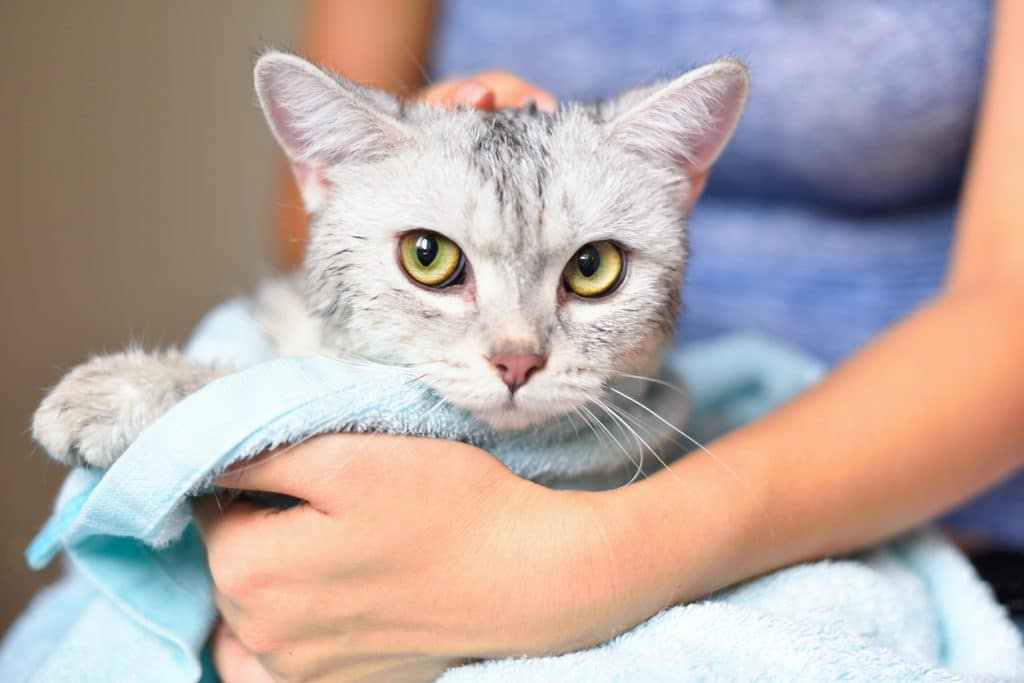
iStock/suiwuya
What If My Cat Won’t Take Pills?
If you suspect your cat won’t willingly take their pill, try one of the following solutions. It’s essential your pet takes their medicine as directed and finishes it.
- Alternative forms. Talk to your veterinarian about other available prescriptions. Your vet may be able to prescribe your cat’s medication in one of these other forms:
- Liquid
- Powder
- Injection
- Flavored chewable
- Transdermal gel, which absorbs through your cat’s skin.
- Compound medications. If your cat’s prescription isn’t readily available in another form, ask your veterinarian if a compound pharmacy can alter the taste or form. Many communities have compound pharmacies. If not, online pharmacies usually offer compound medicines. However, these medications can be more expensive than traditional prescriptions.
- Help from a professional. “Some pet-sitting services can come to your home to assist in pet care, including medication,” Taylor says. “Veterinarians are also willing to administer medicine at an appointment for a small fee,” Lastly, in-home veterinarians can come to your home for stress-free administration.

iStock/Daria Kulkova
Congratulations, You Successfully Gave Your Cat a Pill!
Cats are notorious for being suspicious and highly sensitive to new smells, tastes, and textures. So, it can be challenging to give your cat a pill. Sometimes, sneaking a pill into their food doesn’t cut it. By learning about your cat’s medication from your veterinarian, and using calm, compassionate restraint or creative tricks to hide pills in your cat’s food, you can successfully administer your cat’s medication while reducing stress for both of you.
